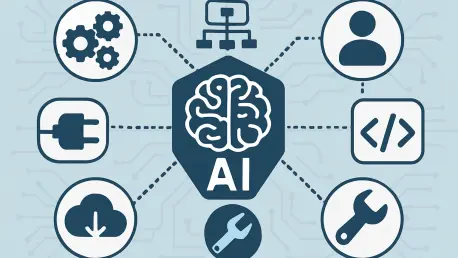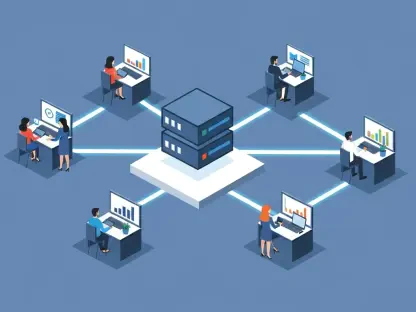In the fast-paced world of technology integration, small companies often grapple with overwhelming challenges that threaten their profitability and sustainability, such as tight schedules, operational hiccups, and frustrated clients who demand flawless results. These pain points can drain resources and lead to burnout among teams struggling to keep up. However, innovative solutions are emerging to tackle these issues head-on, promising to streamline workflows and enhance productivity. One such advancement comes through a cloud-based platform designed specifically for integrators, offering tools that address the core inefficiencies plaguing the industry. By leveraging cutting-edge technology, businesses can transform their operations, focusing on delivering exceptional systems rather than getting bogged down by manual tasks. This sets the stage for a deeper exploration into specific features that are reshaping the way integrators manage projects and interact with clients, ultimately driving success in a competitive landscape.
Harnessing Technology for Operational Gains
Unlocking Productivity with Artificial Intelligence
The integration of Artificial Intelligence (AI) into cloud-based platforms marks a significant leap forward for integrators seeking to optimize their workflows. This technology automates a variety of critical tasks, such as drafting detailed scopes of work, refining quote structures, executing natural language searches, and applying complex financial calculations like margin adjustments. By handling these processes with speed and precision, AI reduces the burden of repetitive manual work, enabling teams to allocate their energy toward designing and delivering high-quality systems. This shift not only accelerates project timelines but also minimizes the risk of human error, ensuring that proposals and financials are accurate from the outset. As a result, businesses can scale their operations more effectively, taking on additional projects without sacrificing quality or client satisfaction.
Beyond automation, AI fosters a smarter approach to project management by adapting to the unique needs of each integration firm. It provides actionable insights that help refine business strategies, such as identifying cost-saving opportunities or streamlining quote adjustments based on real-time data. This adaptability empowers teams to make informed decisions quickly, enhancing their ability to respond to client demands with agility. Furthermore, the precision offered by AI-driven tools builds trust with clients, as proposals and project plans reflect a high level of professionalism and accuracy. For small firms often stretched thin, this technology acts as a force multiplier, allowing them to compete with larger players in the market while maintaining a lean operational structure. The impact of such innovation is clear: integrators can focus on growth and innovation rather than administrative bottlenecks.
Empowering Teams with Mobile Accessibility
A native mobile application tailored for integrators represents another game-changing advancement, particularly for those working in remote or low-connectivity environments like new housing developments. Compatible with both iOS and Android, this app supports offline functionality, ensuring that field technicians and office-based project managers remain connected regardless of location. Technicians gain access to schedules, task management, time tracking, inventory verification, and navigation to job sites, while managers can oversee operations, make real-time adjustments, and send instant notifications. This seamless coordination bridges the gap between field and office, ensuring that projects progress smoothly without delays caused by miscommunication or lack of access to critical information.
The mobile app also enhances accountability and transparency within teams by providing a centralized platform for logging notes and updating project statuses in real time. This capability reduces the likelihood of errors or oversights, as everyone involved has access to the most current data, even in challenging environments. For project managers, the ability to monitor progress and allocate resources dynamically means that bottlenecks can be addressed before they escalate into costly delays. Meanwhile, field staff benefit from streamlined workflows that eliminate the need for back-and-forth communication, allowing them to focus on installation and client service. By fostering this level of operational harmony, the app ensures that integration firms can deliver projects on time and within budget, ultimately strengthening client relationships and boosting profitability.
Streamlining Design and Execution Processes
Simplifying Connections with Visual Mapping Tools
One of the most time-intensive and error-prone aspects of integration work is documenting connections and creating accurate wiring diagrams, a challenge now addressed through dynamic visual mapping tools. Integrated with bills of materials and product catalogs, this feature allows integrators to visually map device connections across projects, whether organized by system, location, phase, or room. Such clarity ensures that the design intent remains consistent from the sales phase through to installation, significantly reducing the risk of miscommunication among team members. By providing a clear, visual representation of complex systems, this tool helps teams execute projects with greater accuracy, saving time and preventing costly rework.
Additionally, the ability to align visual diagrams with project specifics enhances collaboration across departments, ensuring that sales teams, designers, and technicians are all on the same page. This alignment minimizes discrepancies that often arise during handoffs, leading to smoother transitions between project stages. The reduction in errors not only saves resources but also boosts client confidence, as projects are completed with a high degree of precision. For small integration firms, where every mistake can impact the bottom line, this technology offers a practical solution to a persistent problem. By simplifying the documentation process, integrators can dedicate more time to innovation and customer engagement, positioning themselves as reliable partners in a competitive industry.
Reflecting on Transformative Impacts
Looking back, the introduction of these advanced features at a major industry expo proved to be a pivotal moment for integration firms seeking to overcome persistent operational challenges. The combination of AI-driven automation, mobile accessibility, and visual mapping tools provided a comprehensive solution that addressed inefficiencies at multiple levels. These innovations enabled teams to streamline repetitive tasks, maintain seamless communication, and execute projects with unparalleled accuracy. Reflecting on the impact, it became evident that technology played a crucial role in empowering small businesses to reclaim control over their workflows and deliver exceptional results. Moving forward, integrators were encouraged to explore such platforms through accessible trial periods, offering a low-risk opportunity to experience firsthand how these tools could transform daily operations and pave the way for sustained growth and client satisfaction.









